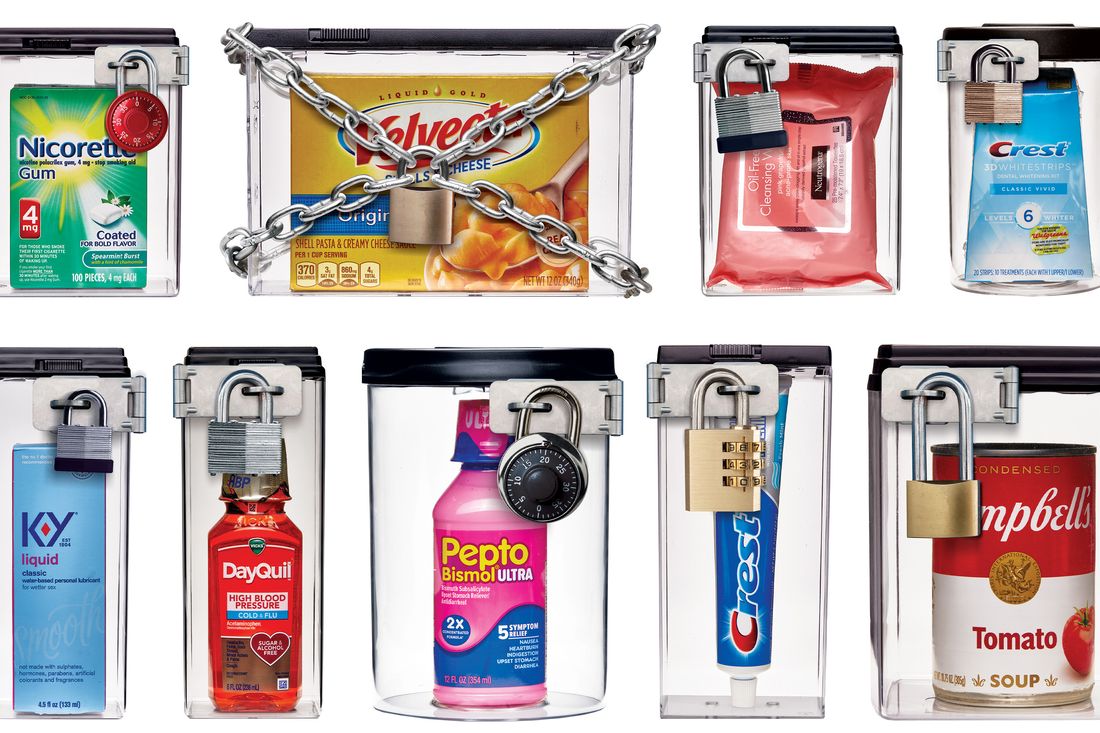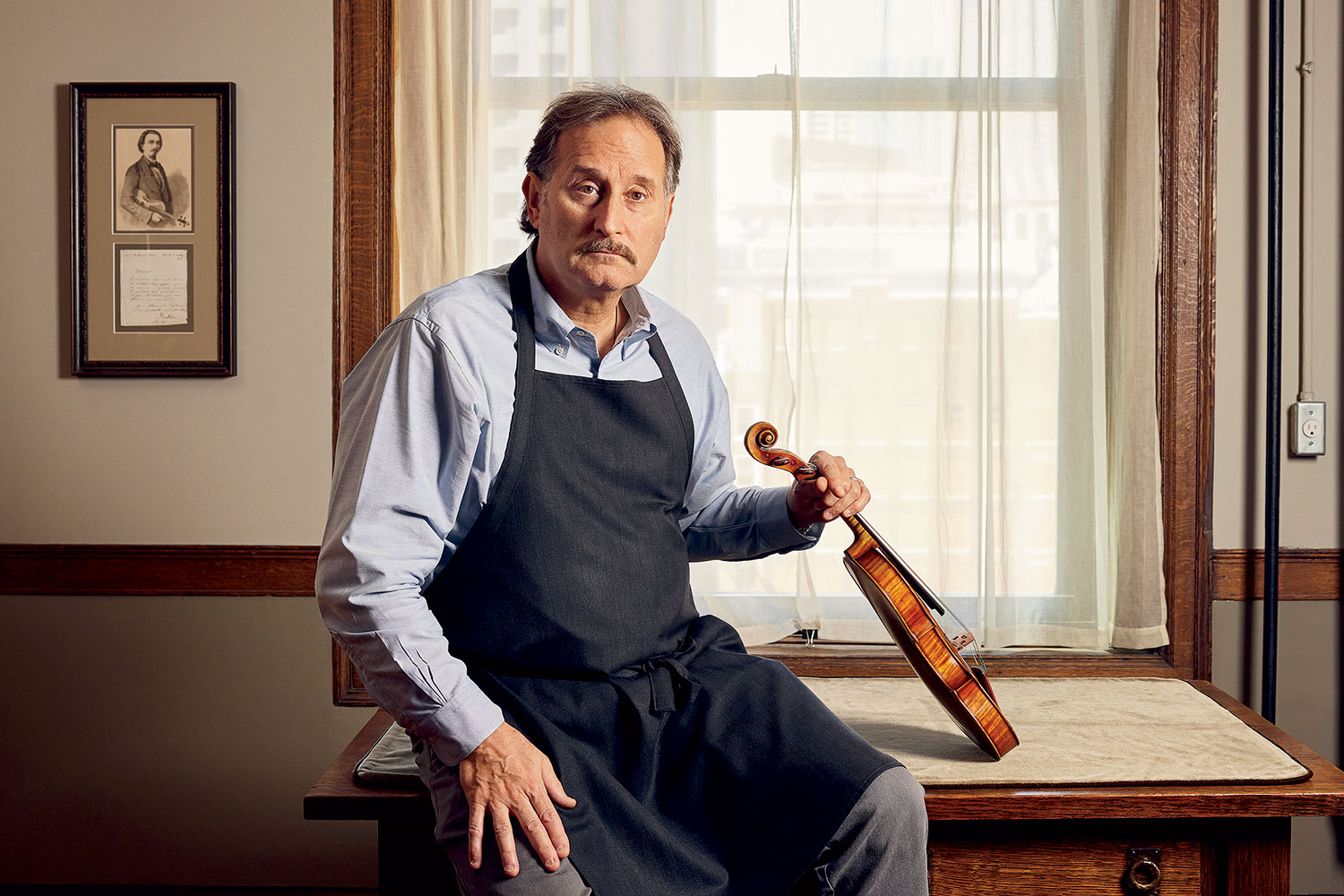Novak Djokovic, age 35, sometimes hangs out in a pressurized egg to enrich his blood with oxygen and gives pep talks to glasses of water, hoping to purify them with positive thinking before he drinks them. Tom Brady, 45, evangelizes supposedly age-defying supplements, hydration powders and pliability spheres. LeBron James, 38, is said to spend $1.5 million a year on his body to keep Father Time at bay. While most of their contemporaries have retired, all three of these elite athletes remain marvels of fitness. But in the field of modern health science, they’re amateurs compared to Bryan Johnson.
Johnson, 45, is an ultrawealthy software entrepreneur who has more than 30 doctors and health experts monitoring his every bodily function. The team, led by 29-year-old regenerative medicine physician Oliver Zolman, has committed to help reverse the aging process in every one of Johnson’s organs. Zolman and Johnson obsessively read the scientific literature on aging and longevity and use Johnson as a guinea pig for the most promising treatments, tracking the results every way they know how. Getting the program up and running required an investment of several million dollars, including the costs of a medical suite at Johnson’s home in Venice, California. This year, he’s on track to spend at least $2 million on his body. He wants to have the brain, heart, lungs, liver, kidneys, tendons, teeth, skin, hair, bladder, penis and rectum of an 18-year-old.
Read the rest of this article at: Bloomberg
Just about any booster hanging around the Diamond District a few years ago knew Roni Rubinov’s pawnshop, New Liberty Loans. Rubinov wasn’t the only fence who would buy stolen goods and resell them online, but he had a reputation for taking pretty much anything a shoplifter could bring him: Rolexes, baby formula, condoms, boxed chocolate, prom dresses, K-cups, Amazon gift cards. He’d even buy food stamps. Once, a booster offered him a box of pens he’d found in a trash can. Rubinov bought it.
Most often, though, boosters sold Rubinov cosmetics pinched from pharmacy chains. On any given day, they would head to Duane Reade or CVS or Rite Aid, sweep an armful of creams — L’Oréal, RoC, No7 — into a pillowcase, and leave. In and out in 60 seconds. Occasionally, some poor sales associate or “loss-prevention specialist” would attempt to scare the culprit, but company policy often prevented their doing much more. Cosmetics in tow, boosters would head to 47th Street near Sixth Avenue, where they were greeted by New Liberty Loans’ soot-stained marquee: WE BUY GOLD & 💎. 2 FLOOR. Up the stairs, past Rubinov’s pawnshop, through a room cluttered with gold testers, money counters, and precision scales, and up a back staircase, they would arrive at Rubinov’s second office, a room he kept for the bounty his legion of thieves brought him. Sometimes there would be a line because boosters came back two or three times a day.
“He was doing that shit like he was operating a completely legitimate business,” said Jerard “Italiano” Iamunno, 39, who boosted for Rubinov on and off for years. “There were other operations out there, but nobody did it like Roni. Because nobody was as greedy as Roni.”
A 42-year-old from Queens, Rubinov had the soft, handsome features of a club promoter and the sleepy eyes of a father of five. He favored Louis Vuitton boots and Gucci shirts and often started his mornings sipping coffee on 47th Street, watching hawks steer customers to pawnshops. In addition to his reputation for hoovering up merchandise, Rubinov was known for being cheap. In 2015, an Ecuadoran immigrant sued Rubinov, alleging the pawnshop owner had paid him just $1.67 an hour to wear a sign outside New Liberty Loans. (Rubinov settled that case only to stiff his own attorney.)
Inside the office, boosters would unload their bags so Rubinov or one of his employees could look over the haul and calculate its retail value. Usually he paid seven to ten cents on the dollar. Two leather jackets: $200. Fifteen pairs of Gap jeans: $150. Two pairs of Gucci sunglasses: $140. Boosters were getting robbed by their fence. Rubinov’s staff would then clean the packages of any tags or labels that made them look stolen and list the goods at a substantial discount on his eBay store, Treasure-Deals-USA. When he saw a particular product was selling well, he would instruct boosters to steal more of that item.
Read the rest of this article at: Curbed
Some years ago, I got a call from an analyst at the National Counterterrorism Center. After yet another gruesome mass shooting (this time, it was Dylann Roof’s attack on a Bible-study group at a Black church in Charleston, South Carolina, that killed nine and wounded one), I had written an article about the young men who perpetrate such crimes. I suggested that an overview of these killers showed them, in general, to be young losers who failed to mature, and whose lives revolved around various grievances, insecurities, and heroic fantasies. I called them “Lost Boys” as a nod to their arrested adolescence.
The NCTC called me because they had a working group on “countering violent extremism.” They had read my article and they, too, were interested in the problem of these otherwise-unremarkable boys and young men who, seemingly out of nowhere, lash out at society in various ways. We think you’re on to something, the analyst told me. He invited me to come down to Washington and discuss it with him and his colleagues.
Read the rest of this article at: The Atlantic
Ever since founding Beyond Meat Inc. in 2009 with the then fantastical idea of making meat without animals, Ethan Brown has been giving the equivalent of one extremely long TED Talk. In 2013 he took the stage at the Wired Business conference, explaining that the world had a very real greenhouse gas-emitting meat problem and that venture capitalists could make a bigger impact investing in fake meat than in solar energy. At Toronto’s annual Ideacity gathering three years later, he said his goal was to replicate the “blueprint of meat.” By the time he appeared at Goldman Sachs Group Inc.’s Builders & Innovators Summit 2019, he explained that his mission demanded the urgency and scale the US mustered for World War II and that his products would simultaneously help solve heart disease, diabetes, cancer, climate change, natural resource depletion and animal welfare. Just like technology had rendered the horse-drawn carriage obsolete, he told the crowd at the New York Times’ climate conference this past fall, so, too, would his system of breaking down plants transform the protein at the center of the plate. “This,” he said, “is something that I feel is inevitable.”
Silicon Valley didn’t need much convincing that a better veggie burger could become the next world-changing disruption. Whereas the quinoa-and-bean patties of yore were for the crunchy set, Brown’s beef facsimile, concocted in a lab to look and taste like the real thing, meant the vast majority of meat eaters could give up their burgers without having to give up anything at all. Along with the venture capitalists came investors from every corner of culture—Leonardo DiCaprio, the Humane Society of the United States and former McDonald’s Corp. Chief Executive Officer Don Thompson. Even Tyson Foods Inc., the biggest maker of real meat in the US, invested and then invested again, catapulting the young El Segundo, California-based startup to a $1.3 billion valuation by 2018.
Read the rest of this article at: Bloomberg
It’s a few minutes past 10 in the morning, and John Becker stands just inside the door to his company’s office in the Fine Arts Building downtown. He wears a black workman’s apron, which he fits to his body by wrapping the ties around his torso twice. With his shoulders slightly hunched, he quietly observes the almost surreal scene unfolding before him.
A few feet away, Joshua Bell and James Ehnes, two of the most prominent solo violinists on the planet, hover over an Arts and Crafts–style wood table. Normally, Bell, a former child prodigy known for his virtuosic, animated playing, and Ehnes, a musician’s musician celebrated for his technical prowess, would be the superstars in the room. Both have won multiple Grammy Awards, and between the two of them, they have performed in nearly every major concert hall and with all the best orchestras in the world. But here, in Becker’s studio inside his office, another icon takes center stage.
“I’m really nervous and excited,” says Bell, his hands stuffed in his pockets. “It’s like meeting my wife again after two months. I’m a little overwhelmed.”
“Oh yeah, I understand the feeling,” Ehnes chimes in, his tone nearly giddy. His eyes are set on an object perched on a gray cloth that covers the tabletop. “I’ve never seen this violin before. It’s incredible. It’s so beautiful.” He pauses as though to take in every contour. The spruce wood — a swirl of orange and red hues — glows under the morning light. “It’s stunning.”
The violin in question belongs to Bell. The 310-year-old instrument, which Bell has said is worth as much as $15 million, is among the roughly 650 made by the renowned 18th-century Italian craftsman Antonio Stradivari that survive today. Bell left it with Becker for repairs, and over the past two months, the master luthier applied protective polish to preserve the original varnish, removed the top to make internal repairs, and handcrafted several cleats to reinforce tiny cracks in the wood. Bell has flown in from New York to retrieve the violin, which has been his concert instrument since 2001, before he departs on a tour of South America and Italy.
Ehnes plans to leave his own Strad with Becker for more minor repairs — a bridge adjustment, a varnish touchup, a new sound post — which will take only a day. The Canadian has made this essential stop before heading to concerts in South Korea and Japan.
Becker turns to Bell and asks if he wants to give the violin a try. It may look beautiful thanks to the fresh polish, but after 213 hours of painstaking work, the true test is how it feels and sounds.
“Yes, I do,” Bell responds, eagerly picking up the instrument.
Becker doesn’t play violin, but his ears are more attuned to the famed sound of Stradivarius instruments than perhaps anyone else’s in the world. He steps back as Bell raises his bow.
Read the rest of this article at: Chicago









